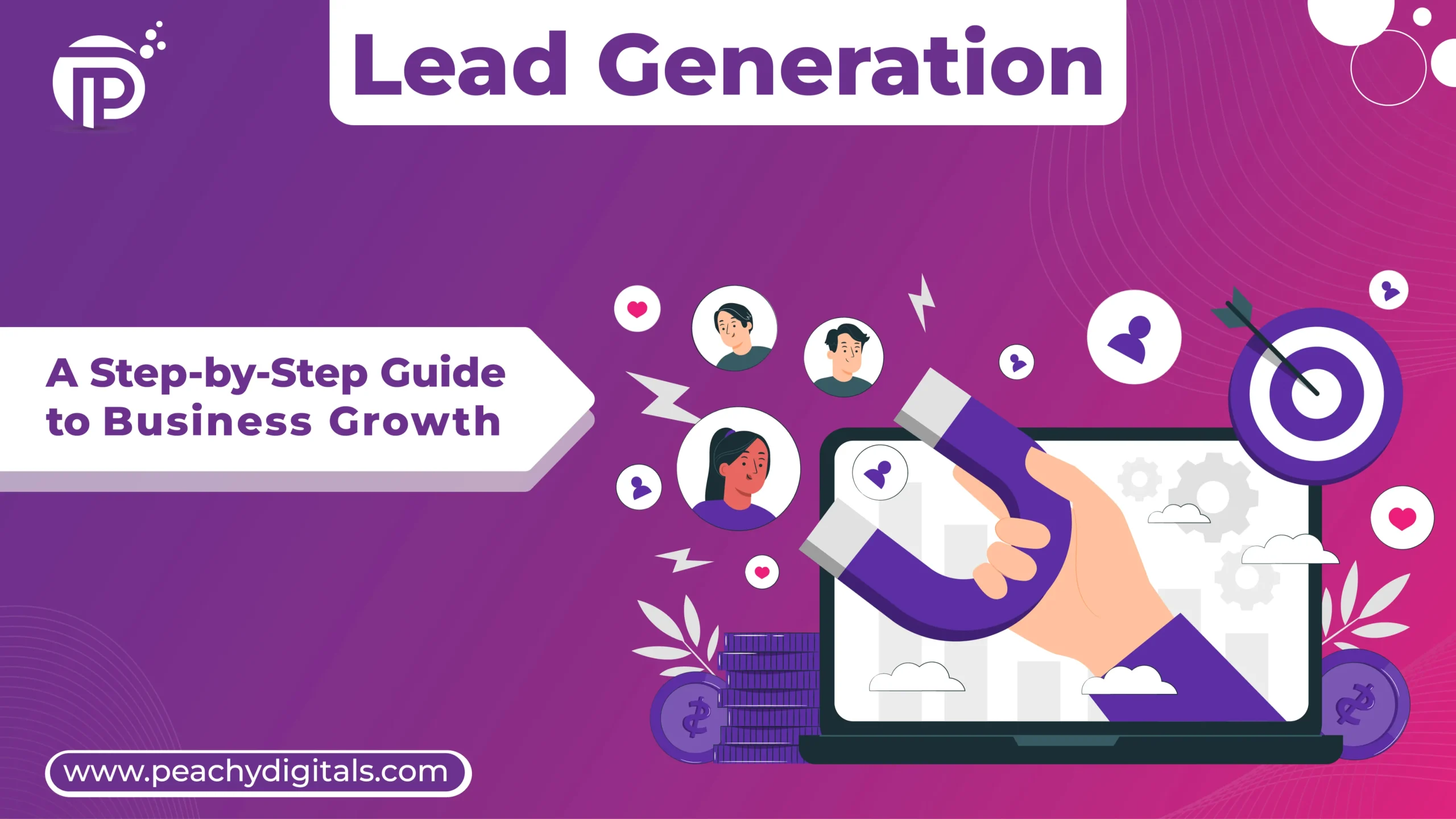Lead generation is an important way to help your business grow by finding new customers. It’s the process of getting people interested in your products or services and turning them into paying customers. In this blog, we’ll explain lead generation, why it matters, and how you can use it to boost your business.
What is Lead Generation?

Lead generation means attracting people who might be interested in your product or service and getting their contact information, like their name or email. Once you have their information, you can follow up with them to turn them into customers. For example, someone might sign up for your email list or download an eBook from your website are potential leads for your business.
Why Lead Generation is Important?

Generating leads is one of the best ways to keep your business growing. Here are some reasons why it’s so important:
More Sales Opportunities: With more leads, you have a better chance of making sales.
Better Targeting: Instead of marketing to everyone, you focus on people who have already shown interest in what you offer.
Building Brand Awareness: Even if people don’t buy right away, they become more familiar with your brand, which could lead to future sales.
Consistent Growth: With a steady flow of leads, your business can grow even in a competitive market.
Best Strategies for Lead Generation

There are many ways to generate leads, but here are some of the most effective methods to help you get started:
Content Marketing
Creating useful and interesting content is one of the best ways to attract leads. Content like blogs, videos, and free guides can show potential customers you know your stuff.
Blogs: Write helpful blogs that answer common questions your audience has. Ensure they’re optimized for search engines (SEO) so they appear when people search for related topics.
Free Resources (Gated Content): Offer free resources like eBooks or reports in exchange for a visitor’s contact information. This way, you give them value while collecting leads.
Email Marketing
Email marketing lets you stay in touch with potential customers and send them information, offers, or updates about your business.
Lead Magnets: Offer something valuable, like a discount or exclusive content, in exchange for signing up for your email list.
Segmented Emails: Send targeted emails to different groups of people based on their interests. Personalized emails are more likely to result in sales than generic ones.
Social Media Marketing
Social media platforms like Facebook, LinkedIn, and Instagram are great places to connect with potential customers and generate leads.
Organic Posts: Share useful tips, articles, and behind-the-scenes content to build trust and engage your audience.
Paid Ads: Use targeted ads to reach people who are more likely to be interested in your products. Social media platforms allow you to show your ads to specific groups based on their interests and behaviors.
Landing Pages and Forms
A landing page is a simple webpage with one goal—getting visitors to take action, like signing up for a free trial or newsletter.
Strong Call-to-Action (CTA): Encourage visitors to take the next step, like filling out a form or downloading a guide.
Easy-to-Use Forms: Keep forms short and simple. Only ask for important details like a name and email, so people are more likely to sign up.
Search Engine Optimization (SEO)
SEO helps your website show up in search results when people are looking for products or services like yours. This way, you attract more visitors without paying for ads.
On-Page SEO: Use the right keywords in your titles, headings, and content so search engines can find your pages easily.
Off-Page SEO: Get other websites to link to your site, which helps build your site’s credibility and improves your search rankings.
Webinars and Online Events
Hosting webinars or online events is a great way to connect with potential leads and showcase your knowledge.
Engaging Content: During webinars, provide useful information and answer questions in real time. This interaction helps build trust with your audience.
Event Sign-Ups: Promote your webinars on social media, your website, and through email. Collect the contact details of those who sign up so you can follow up with them later.
Understanding the Lead Generation Funnel

The lead generation process can be seen as a funnel with three main stages:
Top of the Funnel (TOFU): At this stage, people are just learning about your business. You attract them with content like blogs, social media posts, and ads.
Middle of the Funnel (MOFU): Now, the leads know about you and are interested in learning more. You continue to nurture them with emails, webinars, and guides to keep them engaged.
Bottom of the Funnel (BOFU): At this stage, leads are ready to buy. This is where you offer free trials, discounts, or consultations to close the sale.
How to Nurture Your Leads

Capturing leads is just the first step. You need to nurture those leads to turn them into customers. Here’s how:
Personalized Content: Send them content relevant to their interests and needs.
Drip Campaigns: Use email automation to send emails that guide them through the buying process, keeping them engaged until they’re ready to buy.
Conclusion
Lead generation isn’t just about collecting contact information it’s about building relationships with people who could become your customers. Using methods like content marketing, social media, email campaigns, and SEO, you can attract and nurture leads, turning them into loyal customers.
Start applying these lead generation strategies today, and watch your business grow!


